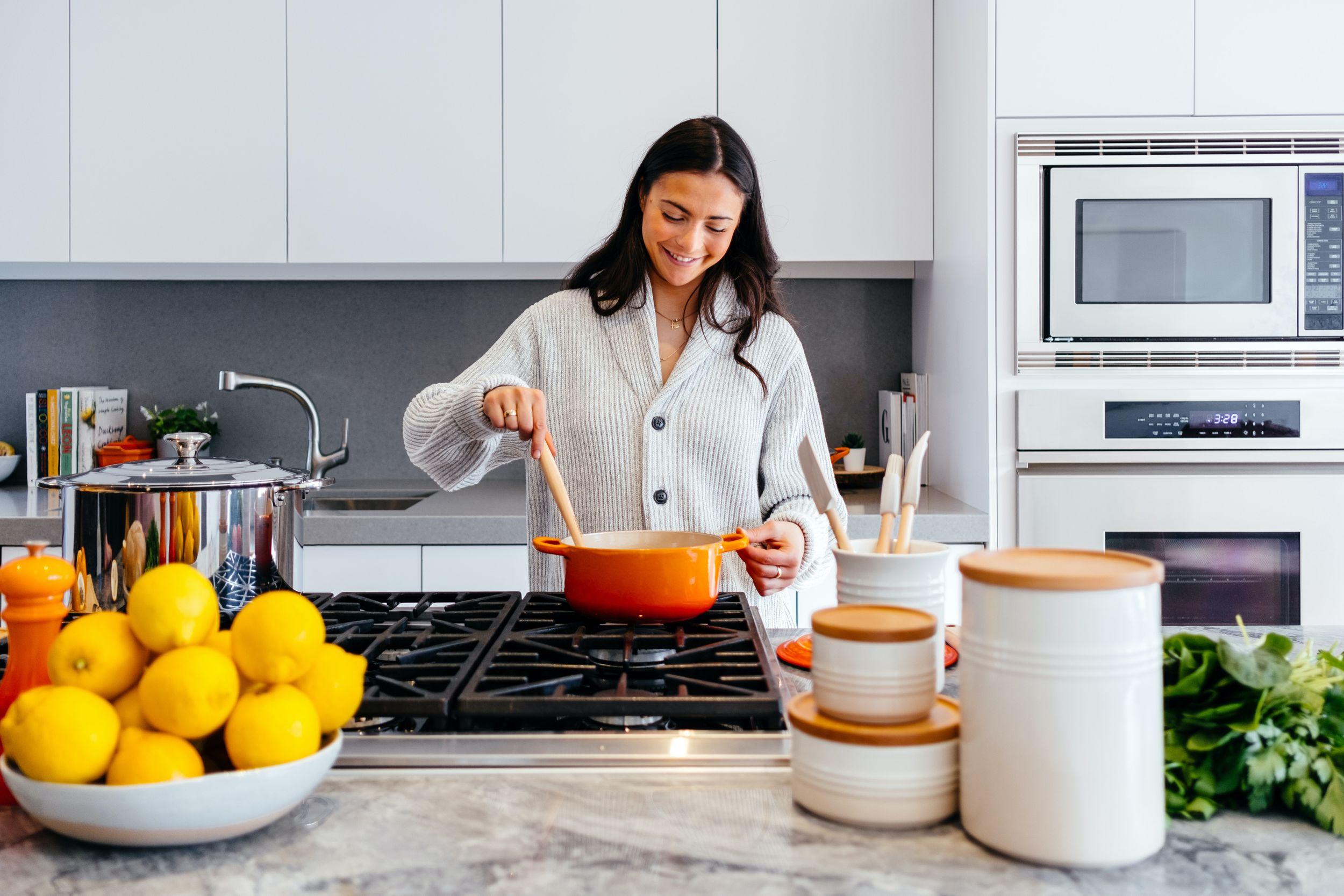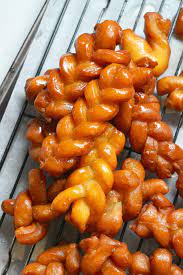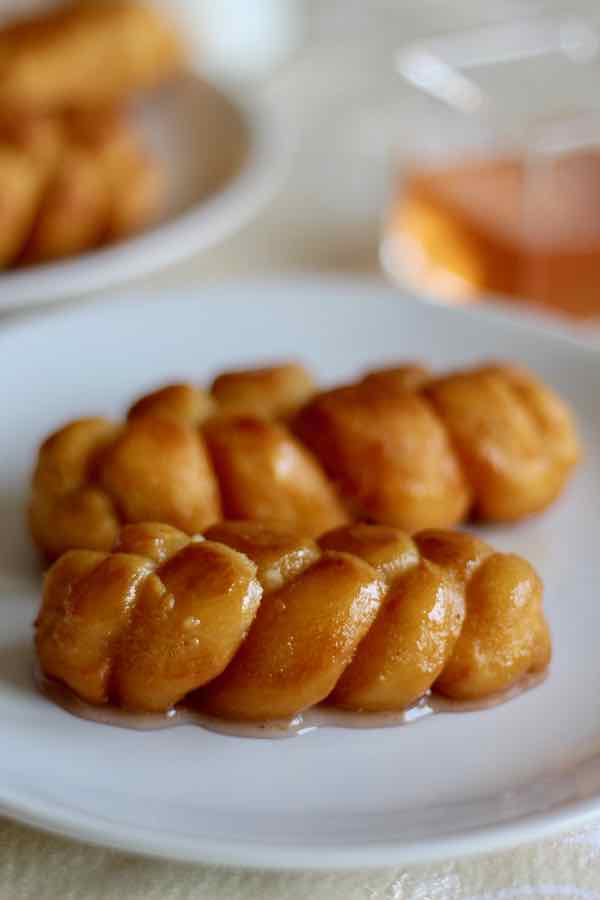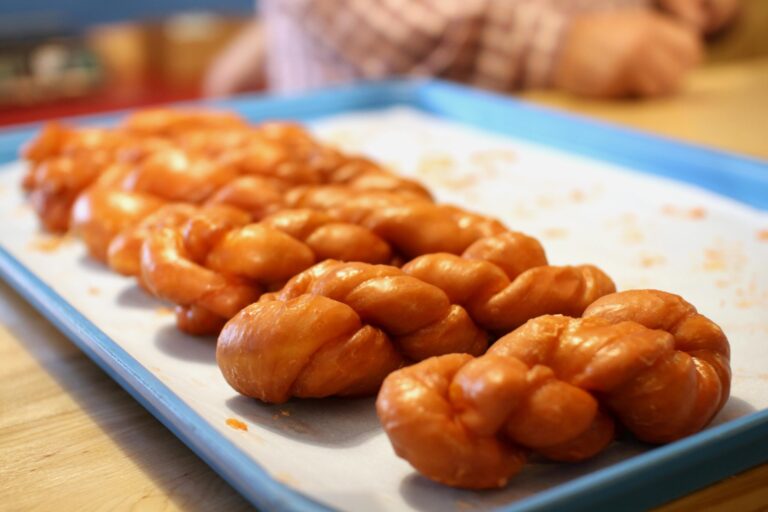Discover the Irresistible South African Koeksister
Introduction to Koeksisters
What are Koeksisters?
Koeksisters are a delightful South African confectionery, known for their sweet, sticky exterior and soft, doughy interior. These twisted or braided pastries are deep-fried to golden perfection and then soaked in a spiced, syrupy sugar mixture that lends them their irresistible sweetness. The result is a crunchy exterior that gives way to a moist, sugary center.
Koeksisters are a staple in South African cuisine and are especially popular during celebrations and festive occasions. They are typically enjoyed as a dessert or a tea-time treat and have a place in the hearts of many who cherish traditional Cape Malay sweets.
History and Cultural Significance
The history of koeksisters is rich and multifaceted, reflecting the diverse cultural tapestry of South Africa. The name “koeksister” originates from the Dutch words “koek,” meaning cake, and “sissen,” referring to the hissing sound the dough makes when it hits the hot oil.
Koeksisters have their roots in the Cape Malay community, where the recipe was passed down through generations. Each family often has its own unique twist on the traditional recipe, making every batch of koeksisters a reflection of personal and cultural heritage.
These sugary delights are not only a testament to the culinary skills of the Cape Malay people but also a symbol of the community’s enduring legacy. They serve as a reminder of the historical journey and cultural blending that has taken place in South Africa.
For those interested in trying their hand at making these traditional treats, be sure to check out our koeksister recipe for a step-by-step guide. To discover a more simplified version, you can also explore our easy koeksister recipe.
Koeksisters continue to be a beloved part of South African culinary traditions, bringing joy and sweetness to every occasion. With their unique texture and flavor, they offer an authentic taste of South African heritage that we can all appreciate.
Traditional Koeksister Recipe
Creating the perfect South African Koeksister requires a blend of the right ingredients and careful preparation. Let’s dive into the traditional recipe that has been cherished for generations.
Ingredients
To make traditional Koeksisters, we need the following ingredients:
| Ingredient | Quantity |
|---|---|
| All-purpose flour | 4 cups |
| Baking powder | 4 tsp |
| Salt | 1/2 tsp |
| Unsalted butter | 4 tbsp |
| Warm milk | 1 cup |
| Egg | 1 large |
| Sugar | 4 cups |
| Water | 2 cups |
| Cream of tartar | 1/4 tsp |
| Lemon juice | 1 tbsp |
| Ground cinnamon | 1/2 tsp |
| Ground ginger | 1/2 tsp |
| Vegetable oil (for frying) | Enough for deep frying |
Step-by-Step Preparation
Let’s walk through the process of making Koeksisters step by step:
- Prepare the Dough:
- In a large mixing bowl, sift together the all-purpose flour, baking powder, and salt.
- Cut the unsalted butter into the flour mixture until it resembles coarse crumbs.
- In a separate bowl, whisk the warm milk and the large egg together.
- Gradually add the milk and egg mixture to the dry ingredients, mixing until a soft dough forms.
- Knead the dough on a lightly floured surface until it is smooth and elastic.
- Shape the Koeksisters:
- Roll out the dough to a thickness of about 1/4 inch.
- Cut the dough into strips approximately 4 inches long and 1 inch wide.
- Take each strip and twist it into a traditional Koeksister shape; alternatively, you can braid two strips together. For more ideas on shaping, explore our easy koeksister recipe.
- Fry the Koeksisters:
- Heat the vegetable oil in a deep fryer or a large pot to 350°F (175°C).
- Carefully drop the shaped dough into the hot oil, frying a few at a time until they are golden brown on all sides.
- Use a slotted spoon to remove the fried Koeksisters and place them on paper towels to drain any excess oil.
- Prepare the Syrup:
- In a saucepan, combine the sugar, water, cream of tartar, lemon juice, ground cinnamon, and ground ginger.
- Bring the mixture to a boil, then reduce the heat and simmer until the syrup thickens slightly.
- Dip the Koeksisters:
- While the syrup is still hot, dip the fried Koeksisters in the syrup, ensuring they are fully coated.
- Place the syrup-coated Koeksisters on a wire rack to cool and set.
For additional serving suggestions, see our section on pairing koeksisters with beverages to enhance the enjoyment of these sweet treats.
Variations of Koeksisters
Koeksisters come in different forms and styles, reflecting the diverse cultures and traditions of South Africa. Let’s explore some popular variations.
Cape Malay Koeksisters
Cape Malay Koeksisters are a cherished variation with a distinct twist. Unlike traditional koeksisters, which are usually syrup-soaked and sticky, Cape Malay Koeksisters are more like a spiced doughnut. They are deep-fried and then coated with a sweet, sometimes syrupy, coconut topping.
The preparation involves a unique blend of spices such as ginger, cinnamon, and cardamom, giving them a warm, aromatic flavor. After frying, they are dipped in a syrup infused with these spices and rolled in desiccated coconut. This process not only enhances the taste but also gives them a delightful texture.
For those interested in making these at home, our koeksister recipe can guide you through the steps.
Twisted vs. Braided Koeksisters
When it comes to South African koeksisters, there are two main types based on their appearance: twisted and braided.
Twisted Koeksisters: These koeksisters are usually made by cutting the dough into strips and then twisting them into a spiral shape. They are deep-fried until golden brown and then soaked in a cold sugar syrup, which makes them sweet and crispy.
Braided Koeksisters: These involve braiding three strips of dough together before frying. The braiding process not only changes the texture but also the appearance, making them look more intricate and appealing. Like their twisted counterparts, they are also drenched in syrup after frying.
Below is a comparison table to better understand the differences:
| Feature | Twisted Koeksisters | Braided Koeksisters |
|---|---|---|
| Preparation | Simple twist of dough strips | Braiding three strips of dough |
| Texture | Crisp and light | Denser, more chewy |
| Appearance | Simple twist | Intricate braid |
| Syrup Absorption | High | Moderate |
Understanding these variations allows us to appreciate the versatility and cultural importance of this delectable South African treat. For more recipes and inspiration, check out our easy koeksister recipe.
Serving and Enjoying Koeksisters
Indulging in the delightful world of South African sweets, koeksisters hold a special place. Learning the best ways to serve and enjoy these treats can enhance your experience and appreciation for this traditional dessert.
Best Way to Serve Koeksisters
Koeksisters are best enjoyed fresh and crispy. To achieve this, they should be served right after they have been soaked in syrup and allowed to cool completely. Koeksisters are typically deep-fried, then plunged into a cold syrup which gives them their characteristic sweet and sticky texture.
Here are some tips for serving koeksisters:
- Temperature: Koeksisters should be served at room temperature or slightly chilled. Allow them to reach room temperature naturally; avoid refrigerating them as this can make them too hard.
- Presentation: Arrange koeksisters on a serving platter in a single layer to prevent them from sticking to each other. For an added touch, you can sprinkle a light dusting of powdered sugar.
- Timing: Serve koeksisters on the same day they are made for the best texture and flavor. If you’re preparing for a party or special occasion, you can make them a few hours in advance.
Pairing Koeksisters with Beverages
Pairing koeksisters with the right beverages can elevate the tasting experience. Here are some popular pairings:
- Tea: A classic choice, tea complements the sweetness of koeksisters beautifully. Whether you prefer black tea, chai, or a robust rooibos, the warmth and slight bitterness of the tea balance the sugary treat.
- Coffee: Coffee is another fantastic pairing, especially if you prefer something with more depth and richness. A cup of strong, freshly brewed coffee cuts through the sweetness, creating a delightful contrast.
- Milk: For a comforting and less intense option, pair koeksisters with a glass of cold milk. The creaminess of the milk complements the syrupy texture of the koeksisters perfectly.
Here is a table summarizing the best beverage pairings:
| Beverage | Description |
|---|---|
| Tea | Complements the sweetness with warmth and light bitterness |
| Coffee | Adds depth and richness to the tasting experience |
| Milk | Provides a comforting and creamy contrast |
For those interested in trying out different variants of this beloved treat, you might want to explore our koeksister recipe or find an easy koeksister recipe. Enjoying koeksisters with the right pairing can make for an unforgettable culinary journey through South African culture.

Lerato Mahlangu is a passionate South African chef, food writer, and advocate for celebrating the flavours of Mzanzi. Inspired by her roots, she shares authentic and creative recipes that honour South Africa’s culinary traditions. When she’s not in the kitchen, Lerato enjoys exploring local markets, connecting with food lovers, and celebrating the stories behind every dish.



